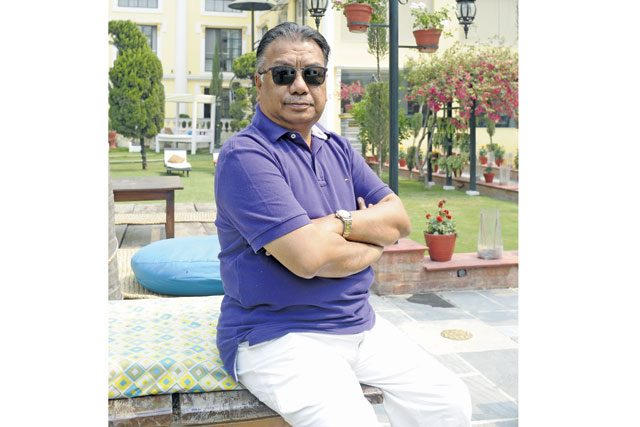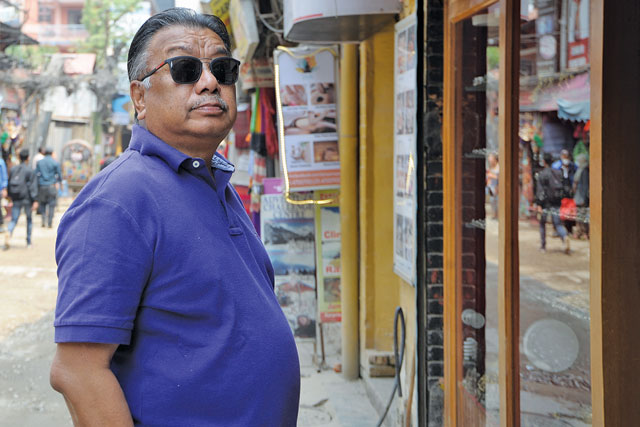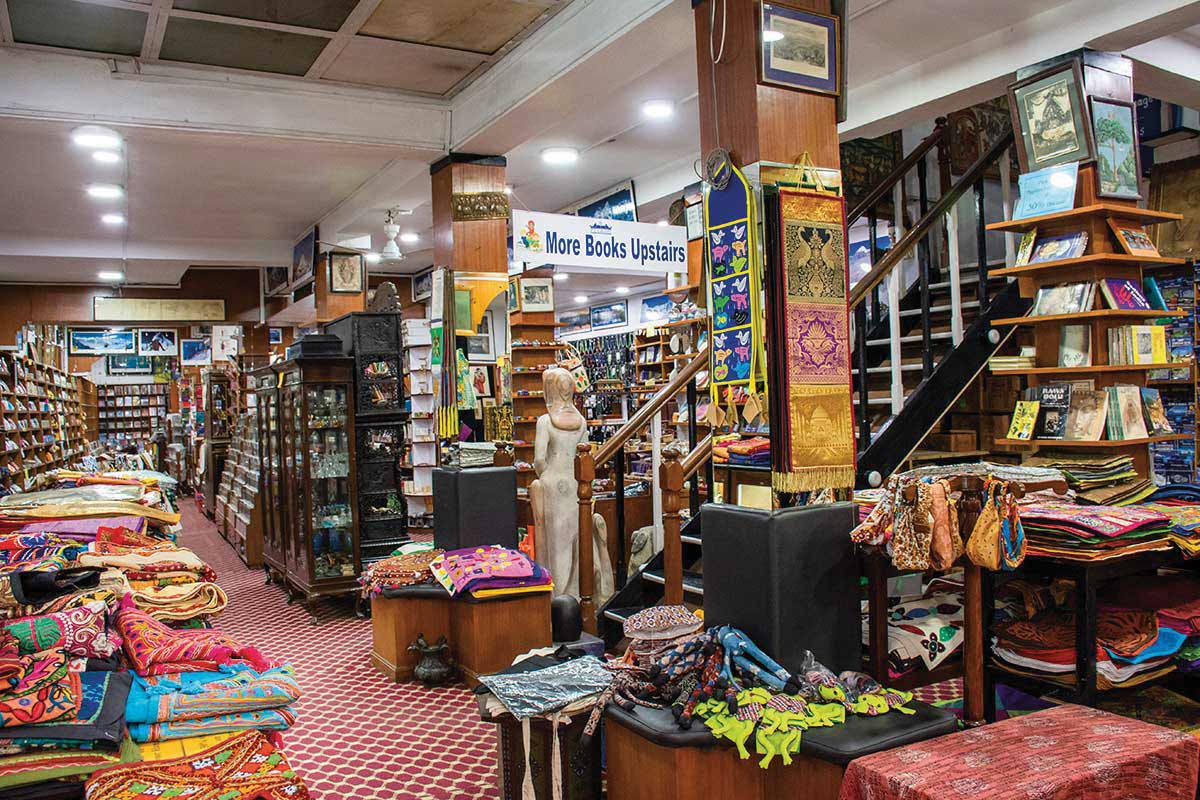Thamel’s preeminence as the tourist center of Kathmandu owes much to the efforts of a few visionaries, foremost among them being Mr. Karna Sakya.

I believe Thamel is the most densely tourist-populated area within a comparative area anywhere in the world,” says Mr. Karna Sakya, founding chairman of KGH Group of Hotels and Resorts, of which Kathmandu Guest House in Thamel is the flagship.
It is quite a startling revelation, but just as he says it with a fair degree of surety, it can be also said with equal conviction that he himself played the most vital role in it being so. It is something that is sure to be imprinted in the history books when talking about Nepal tourism, if it already hasn’t. “Today, Thamel is no more only for budget travelers and backpackers as it used to be before,” he adds. “There are about five five-star hotels, some in operation, and some upcoming, in and around the area. In addition, you get the best-of-the-best cosmopolitan cuisine here.”
It was way back in 1967 that Kathmandu Guest House first came into being; a “makeshift-hotel” in Mr. Sakya’s words. “When I was still a kid, my father bought an old Rana durbar. Years later, after I resigned from my government job as a forester, I talked to my brother about starting a hotel in the building, and we started with thirteen rooms. It was a makeshift arrangement.”
His background as a forester, and his love and concern for nature, no doubt is responsible for his firm belief in the concept of nature-based tourism. “We had the biggest garden in the area, an asset that few others could boast of in the locality,” he says with pride, “and our guests loved it.” He has combined nature with tourism in all his properties, the beautiful Park Village Resort in Budanilkantha being a shining example of one. Seemingly, he is really enamored by Kathmandu Guest House’s garden, which he claims to be more beautiful than even the Garden of Dreams nearby.
“Once you enter our premises, you’ll immediately feel a sense of serenity and security,” he effuses, talking about his flagship hotel, “especially because there is always the usual hustle and bustle expected of a tourist hub like Thamel just outside the gates. It’s quite a contrast!” He also reveals that change is a constant at Kathmandu Guest House, because he is of the opinion that “tourism is never ending and ever changing,” and so, one has to follow the changing scenario to be in sync. “Fifty to fifty-five percent of our guests are regulars, and we want to give them a nice surprise every time they visit us,” he says. Towards this end, the guest house is given a new coat of paint every year, along with other changes in décor.
A note on the Garden of Dreams: Mr. Sakya was the national coordinator of Visit Nepal Year 1998, and it was his idea at that time about making the area into a lovely garden. Well, of course, it is to be expected that a man like him—one who has led many tourism initiatives, besides being the founding chairman of Nepal Heritage Society, and author of half a dozen or so books—should be involved in many tourism, conservation, and development issues of the country. In other words, he is a societal leader whose intelligently and innovatively considered opinions matter.
It was just this kind of intellectualism that helped Thamel grow and develop into the tourism center of the country. As everyone knows, at the time of Kathmandu Guest House’s establishment, it was Jhochen (famously known as Freak Street) in Basantpur that was the thriving hub of tourism. It is interesting to dwell on the fact that there is no clear logic why that hub simply was transferred to Thamel, despite it being in a magnificent location, and with plenty of tourist facilities.

Mr. Sakya’s explanation clarifies the issue somewhat. He admits that it was fortunate for him that just as they were starting Kathmandu Guest House, the trekking sector began to see a dramatic rise. The hotel being nature-centered, the trekkers preferred it over others. In addition, he came to know about a less-known tourism opportunity, the so-called Europe-Australia trans-migration route, whereby adventurous tourists were traveling from Australia overland through much of Asia to get to Europe, and vice versa, but were bypassing Nepal at the time. So, he got in touch with some of the concerned tour operators, and soon enough Kathmandu became a hub on the overland route, as well. “Our collaboration with Encounter Overland, especially, was very fruitful, resulting in many overland tourists coming to Kathmandu and staying with us.”
When the guest house started to become successful, he began to think of how Thamel could be expanded as a tourist center. His visionary thinking arose from the fact that he has always considered himself to be an entrepreneur, whose goal is long-term, rather than a businessman with his mind on short-term profits. “We had to acknowledge that Thamel, too, could someday go the way of Jhochen,” he says. “Our hotel alone wouldn’t be enough to sustain the growth, so I talked to some established names of Jhochen, such as KC’s and Pumpernickel, to name just two,about opening up shop in Thamel. Actually, initially, I had gone so far as to ensure availability of even postal stamps here at the guest house, so that tourists didn’t have to visit the post office!”
His efforts began to bear fruit, with all sorts of shops opening up in the locality. His own guest house also saw rapid expansion, and grew, at first, to 90 rooms, and later still, to 135 rooms. Today, the venerable guest house’s success has led to the formation of the KGH Group of Hotels and Resorts, which operates eight nature-based properties around the country. Its success has also encouraged hundreds of other tourism establishments to grow and prosper in and around Thamel. Indeed, Kathmandu Guest House is not only the flagship of the group, but “the very soul of Thamel.”











